- Lalo Schifrin, composer and jazz musician, 1932-2025 Financial Times
- Lalo Schifrin, Prolific Film Composer Who Wrote ‘Mission: Impossible’ Theme, Dies at 93 Variety
- Americas The Guardian
- Tom Cruise devastated as ‘Mission: Impossible’ icon dies aged 93: Report Geo.tv
- The Pretenders’ Chrissie Hynde Shares Angry Eulogy For ‘Mission: Impossible’ Composer Stereogum
Category: 5. Entertainment
-
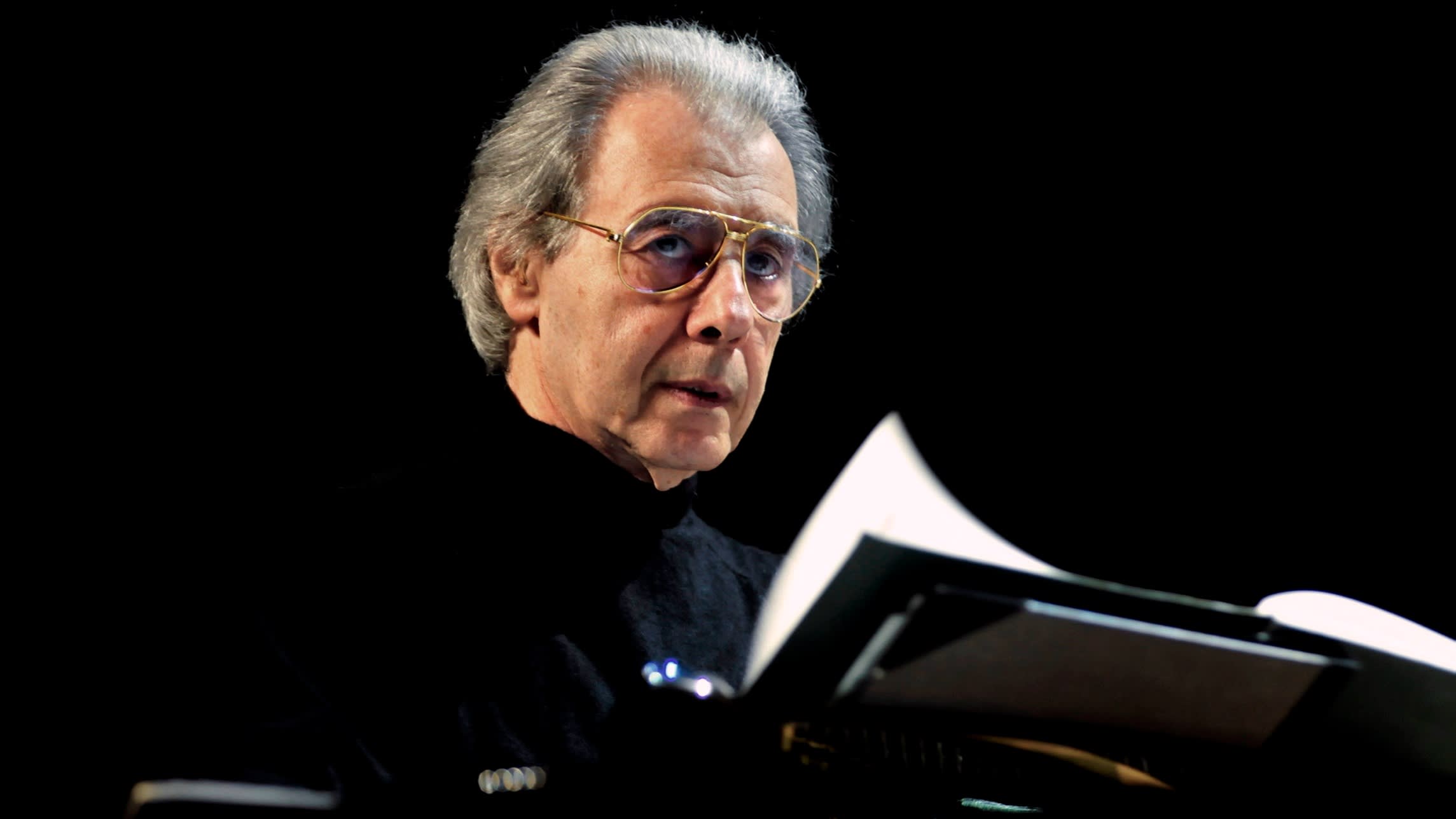
Lalo Schifrin, composer and jazz musician, 1932-2025 – Financial Times
-
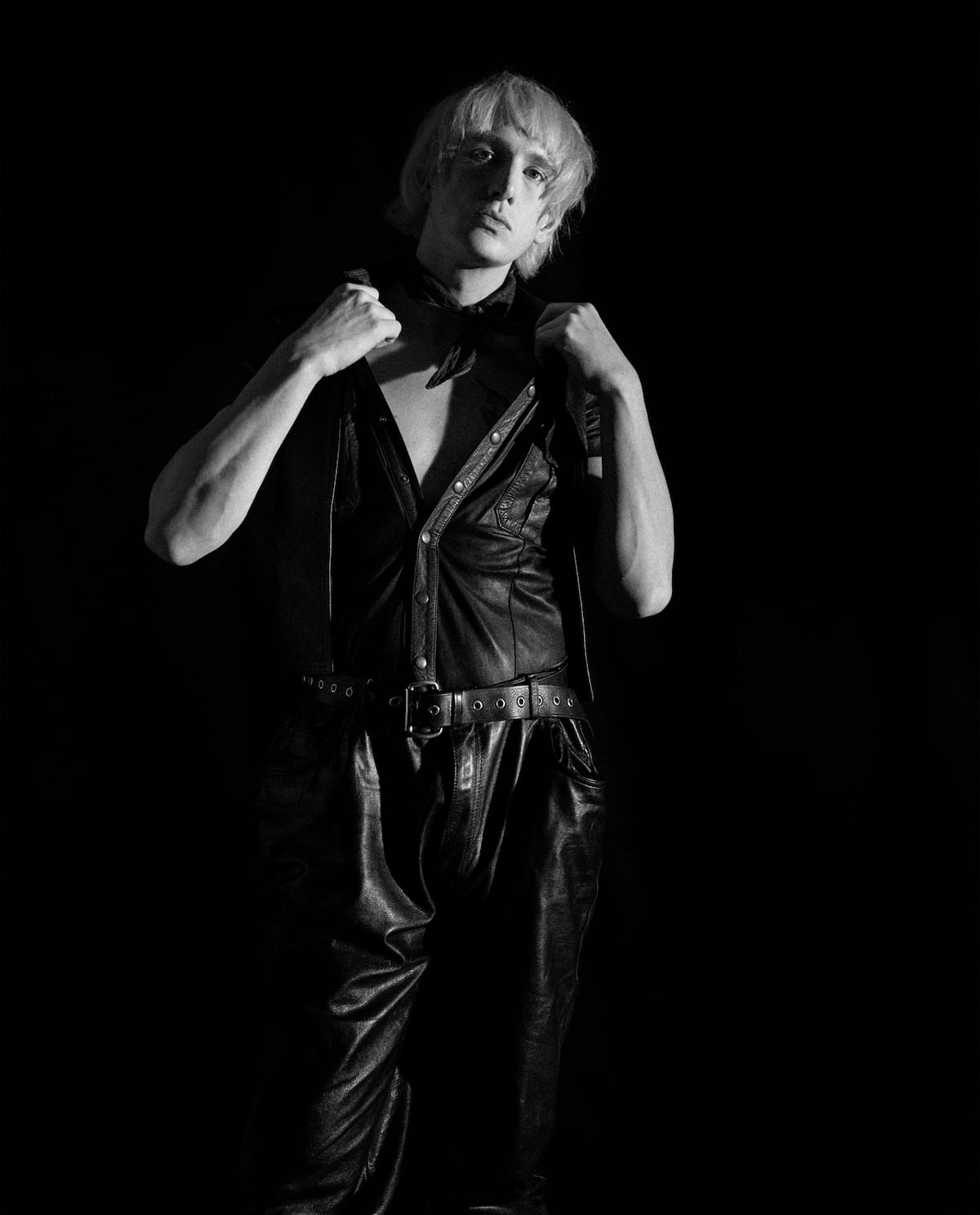
Patrick Wolf: ‘I’ll be in recovery for the rest of my life. I have to be the dominatrix, rather than the slave’ | Culture
This morning, before his interview, Patrick Wolf, 41, went swimming in the North Sea. It’s what he does every day, from the beginning of spring until fall. Afterwards, he returned to his home in East Kent, a place where he arrived by pure chance a few years ago at, he says, “my lowest point of obscurity.” Up until that point, the London native had always been a city boy. “I used to live in a house [in London] by Waterloo station. But in the pandemic, I was forced out to the suburbs. For so much of my life, I’ve been really drawn to the places where my brain starts to rot, in the liminal spaces and suburbia, the places which aren’t one thing or the other. The black mold of my soul just crept in. I knew I couldn’t afford to go back to London, like many people can’t. I thought — and this was combined with sobriety as well — I’ve got to go somewhere where I can wake up in the morning with a sense of wonder and the thrill of looking around my environment. So, I went as far east of England that you could and found a little house here. I found an abandoned concrete hover port with all this nature. I just felt immediately, this is where I live now.”
What might seem like yet another story of moving during the era of Brexit and gentrification is in reality, a tale of survival against the odds. Between 2002 and 2012, Wolf had a brilliant and atypical career in British pop. At 18 years old, he released Lycanthropy, a shining introduction to a singer-songwriter who played all the instruments on his albums, an artist who had his roots in English folks and counterculture, a kind of feral child raised among ukeleles, synthesizers, electric guitars, harps and clavichords, whose deep voice sang gothic and sophisticated lyrics that seemed straight out of an Angela Carter or Virginia Woolf story.
That album was followed by four more, two of them on major labels. Wolf found success, played nonstop concerts, earned money. In 2012, after putting out an unconventional acoustic compilation, he fell silent. Later, the public would learn that he’d been overtaken by creative, personal and family crises. Addictions, losses, bankruptcy, grief. That cycle is finally coming to an end.
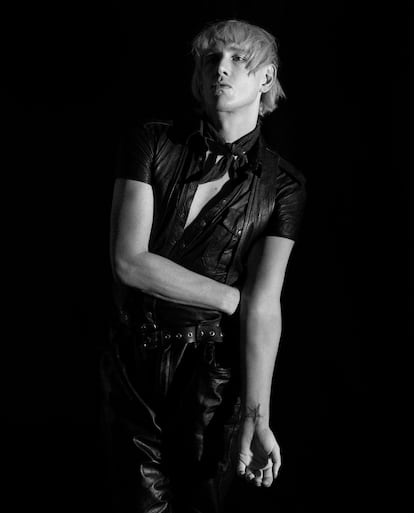
Last month,Wolf released Crying the Neck, his first album of completely new material in 13 years. Since May, he’s been touring its music and reuniting with his fan base. “ When it had been a decade since my last album, I put out a little EP [The Night Safari, 2023]. It was getting a bit too self-indulgent, the time away. I thought, ‘It’s now time.’ I had survived on royalties and bankruptcies, saying I had no debts for a while. I had been digging long enough under the earth, I’d found enough treasure that I thought it was time to bring it back and start sharing with the world.” One need only listen to the first piano chords of Reculver, the song that opens the album, to agree that Wolf is back. And in top form, with prodigious melodies and that deep and unmistakable sound, austere yet refined, of his early recordings.
“Luckily when in bankruptcy, they can’t legally take the tools of your trade,” he explains when asked about having regained his sound. “If you’re a musician, they can’t take your instruments.” During the first years of his career, Wolf collected all kinds of instruments. “The way those records were sounding was because those were the instruments around me, that I could see in my bedroom. And then when I became a pop star,” he smiles, “I had so much, being in the public eye, I kind of forgot that all those instruments were in storage.”
When he re-emerged from the shadows, he discovered they were still there, and picked them up again. Now, a shed in his garden houses a small recording studio where most of his new album came to life. “It was my dream as a teenager, and all the way up to my thirties, when I stopped having dreams about where I want my life to be and my work to be. A lot is to do with having a room of your own, really, to think. Like, the major label albums, I would always be on the contract with the creative control. But when somebody is throwing half a million pounds around, creative control also means a lot of boardroom meetings,” he says.
His relationship with the recording industry was somewhat convulsive. The Magic Position (2007), his biggest commercial hit, led to him being labeled as an extravagant, Baroque artist, a kind of colorful response to the folk renaissance. Wolf made perfect songs, wore his hair dyed red and even starred in a Burberry campaign alongside model Agyness Deyn. In 2011, with the release of Lupercalia, he said he’d spent a fortune renting a glassed-in penthouse on the banks of the Thames, just to see what it felt like to live there. But it was all a mirage. In 2015, his mother was diagnosed with cancer and Wolf nearly died in a hit-and-run in Italy. He rose from the crash covered in blood and, completely distraught, shouted, “Let’s go to the beach!”
“It was the universe saying, ‘Slow down,” he confessed to The Guardian. In 2017, he was declared in bankruptcy and in 2018, after the death of his mother, he started drinking again. But he prefers not to wallow in those years. “I put the work in to be free from that period of time,” he says. “I used to think that the power of writing would be enough to divorce you from the recent trauma of life. I realized by the end of my twenties that hadn’t worked for me. I had written, I’d made art I was very proud of, but in terms of doing the emotional deconstruction, none of that work had been done. I was still basically an 18-year-old, you know, but 32, and I hadn’t done any work. I’d just been out there looking glamorous and singing to big audiences and sharing my stories with people and being useful to other people. I do think other people’s music can help you through problems, but writing your way out of this situation — it sounds like this romantic emancipation, like a spiritual quest, but really, there’s a reason why psychotherapy exists.”
The key, he says, is not to sublimate suffering through art, nor to drop one’s guard. “I’m still in recovery for the rest of my life as an addict. I have to do daily work, that’s a way of keeping on being the dominatrix over the slave, making sure that misery is on the chain and you’re in charge of it. I’ve grown with responsibility in order to stay functional, but that involves not staring at the past at all. If you look that way too long, there’s a danger of it.”
His new album is the first of a series of four which, during the next 10 years, Wolf plans to release following an almost conceptual plan. Each corresponds to a season of the year, and speaks of traditions, legends, rites and folklore. Crying the Neck, at first glance, is luminous — it’s the summer album. “This grief naturally feels like gothic subject matter. I’m not going to set that in Halloween,” he jokes. But nor is he hiding from the trauma. The press statement for the LP talks about mourning, addictions, loss and illness. “I’m like, this is for a party!” he jokes. Lead single Dies Irae is an impossible conversation set between the artist and his dead mother.
“They are all quite intimidating subjects. I’m like, why isn’t it on the radio? I’m delivering quite a lot of overwhelming subjects. If I was in the literature world, then it would be intimidating work, but within this context of pop music, I understand if this might be a hard record for people,” he reflects. “For me, survival is like — death becomes an affirmation of life.” Has he learned something from the suffering? “Well, I think some people don’t learn and they sink with the ship. There seems to be a disease in culture, I feel, at the endings and positivity. What the album tries to address is that actually, it’s very important to live with your sorrow, it kind of creates a shadow for your job, a contrast to your optimism. The album doesn’t have this happy ending and then you turn into a butterfly and fly away and it’s a sunny day. It finishes by saying, I am feeling incredibly heavy and I think I will carry this with me for the rest of my life. It’s important to live with these things and to find a space for your sorrow.”
In his case, that learning has led him to limit his public presence. “I wasn’t that famous. But I was ashamed, and that was inherited from the way the media perceived me.” He says he regrets having allowed them to paint him as “this kind of monstrous clown”. “I did want to be famous, you know, because it seemed so much fun. Little did I know that the pursuit of it would drive you insane, and that it’s the complete opposite of doing good work. You know, unless you’re very clever and your art form is celebrity, like Charli XCX. But my work, if I look back on it, is incredibly introverted.”
Part of that overexposure had to do with his sexuality. “It was like, you’re the only gay person and you work at McDonald’s, or you’re the only lesbian in the office. Out of survival, you become more funny, or you become something that you’re not in order to develop a sense of belonging. But you’re actually not sharing your vulnerable side at all. Talking about indie music, I was the only out gay boy in this country, you know. I had unresolved trauma from being that at school, and the violence that surrounded that. Then you’re thrust into a professional context, and you feel like it’s the only way people can accept you. I had to deconstruct that over the years, and I can’t do that anymore. What I realized when I got clean and sober was that I’m actually an incredibly quiet person and really unsure of myself, and that’s not conducive to being a successful public figure. I’m out here now as an advocate for my work. It’s such a strange mental labyrinth to go into, that I’ve escaped now. I understand that it’s not about being Patrick Wolf, it’s something that I think comes down to a minority experience within the workplace.”
I’m still in recovery for the rest of my life as an addict. I have to do daily work, that’s a way of keeping on being the dominatrix over the slave
What does he think, then, of the new generation of artists who celebrate such labels? “I don’t think that my experience at 41 is gonna help somebody at 21. They’re going through a whole different set of social circumstances,” he reflects. “But for a long time, we were all trying so hard for there to be no suffix. There were certain interviews that were like, ‘sing a song right now’ and it had to be flamboyant. It was like seeing Laura Marling release an album as ‘a female songwriter’. And now the new generations are coming in like ‘queer artists, Black artists.’ I’m like, guys, don’t undo the freedom of having your work speak for itself. It’s really very liberating. But I think in a way, it shows that something that we were really trying to push away is seen as something to celebrate. I think over the next 10 years, my comments on sexuality and society are going to be quite sparse. It’s a rapidly changing country in which our identity is either being weaponized or commercially exploited. I think it’s better to be observant and see where you can help on a day-to-day level.”
But for now, the priority is his new songs, his tour, and his plans for the coming years. He’s now better prepared for success, if it comes, and has learned to enjoy living in a place where no one has ever heard of Patrick Wolf. “I landed here at my lowest point of obscurity. My driving instructor said, ‘What do you do?’ He got really obsessed with Googling me and people are finding out very slowly. Generally, they don’t care about that kind of thing at all down here. But I can’t keep that secret any longer. It’s like a nudist beach: at the end of this, I hope I can still be naked and no one’s going to get their phone out and stuff like that. I’m not insane enough to want to pursue that level of celebrity. I kind of would love pure anonymity for the next 10 years, but it won’t happen, you know.”
Sign up for our weekly newsletter to get more English-language news coverage from EL PAÍS USA Edition
Continue Reading
-
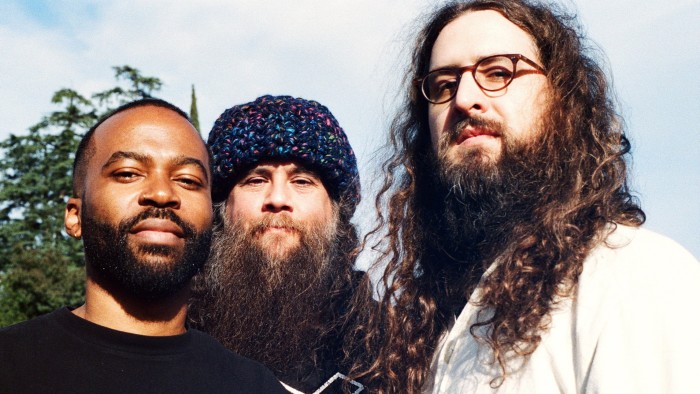
Openness Trio album review — spiritual jazz meets electronica
Unlock the Editor’s Digest for free
Roula Khalaf, Editor of the FT, selects her favourite stories in this weekly newsletter.
The subtle musical collages and slowly unfolding soundscapes that mark Openness Trio, the debut release from a collective comprised of Nate Mercereau, Josh Johnson and Carlos Niño, are a far cry from the urban stamp that marks Blue Note’s classic recordings. The five tracks were recorded in various locations dotted around Los Angeles, and the trio’s rhythmic palette has more in common with the minimalism of Steve Reich than the polyrhythmic bounce of modern jazz. Add in layers of electronica that bring to mind the soundscapes of noughties Nordic jazz, and this release represents something of a Blue Note outlier.
Although the trio’s musicians project a strong common bond with shared influences ranging from Robert Fripp to spiritual jazz, their musical careers have taken different paths. The underground reputation of percussionist/producer Niño rests on his long-running ambient jazz project Carlos Niño & Friends. Guitarist Mercereau, a new underground face, is currently grabbing attention for his control of advanced guitar synthesiser techniques to forge improvised sound.
In contrast, seasoned session saxophonist/producer Johnson has performed on recordings for Miley Cyrus and Harry Styles, and spent five years as soul singer Leon Bridges’ musical director. The canny arranger’s touch remains intact, but now his crisp phrasing is overshadowed by resonant ripples, seductive doodles and swaths of mournful sustains.
The set opens with the oscillating electronic pulse of “Hawk Dreams”, which was recorded outdoors in the hills of Ojai. As the piece develops, stirring melodies from doctored sax and guitar synthesiser assemble, merge and float away over a bed of textured sound. “ . . . Anything is Possible” comes next, with acoustic sax ruminating over rhythmically fractured support, and then the churchlike moods of “Openness”, which was recorded in an oak tree cathedral growing in a hillside orchard.
The final two constructions continue to immerse the listener in ambient rhythms, kaleidoscopic textures and flutters of tenor sax. The gentle warmth of “Chimes in the Garden” is contemplative, but the sway of “Elsewhere”, recorded under a pepper tree in Topanga Canyon, pushes dynamics to the extreme.
★★★★☆
‘Openness Trio’ is released by Blue Note
Continue Reading
-

Anna Weyant’s secret? Knowing when to kill her paintings
Anna Weyant shares her home with a ghost. Not the metaphorical kind; not the ghost of painters before her, nor the ghost of her early, soaring success. Just the standard issue, after-life sort of ghost.
“When I first moved in, I just felt this presence of a spirit and started researching the building — more and more things were happening and I thought: somebody’s here. There were certain areas that I didn’t want to go into. I ended up finding out that somebody had passed away in my bedroom. And so I actually found out where his widow lived,” she tells me as we enter the studio space of her apartment.
To be in touch with her, I ask?
“No, I read him the address one night to see if he might want to go there, because it’s just down the street.”
Anna Weyant’s ‘Slumber’ (2020) © Anna Weyant Weyant, aged just 30, is one of the most successful and spoken about young painters in the world. She lives with her elderly King Charles spaniel, Sprout, in a sedate, beautiful space uptown, which strikes me as I enter it as notably old New York, dark wood and low lighting, not fussy or self-consciously sophisticated, but definitively adult. Everything uptown feels a little more permanent, the residents older, more fixed, less subject to the temporal shifts of the city, and it makes sense to me as we speak that she has chosen to exist here rather than in a trendier neighbourhood or apartment. Despite some caustic dismissals about the nature of her career, Weyant is in it for the long haul.
We are meeting in advance of her first major museum show, which opens at the Thyssen-Bornemisza National Museum in Madrid this month. This will be the first exhibition to draw from her entire output, through 26 paintings, predating her first New York solo show in 2019, Welcome to the Dollhouse, and past her most recent in London, Who’s Afraid of the Big Bad Wolves? in 2024. Particularly appealing about the exhibition, according to Weyant, was the opportunity to select works from the Thyssen’s collection to be presented alongside her own, including a Magritte, a Balthus and a beguiling portrait by the German painter Christian Schad. One senses that the opportunity not only to show the growth of her own work, but also to declare some influences not typically ascribed to Weyant, is important to her.
“There’s only one work that I really was insistent on having, this big painting called ‘Feted’ [2020] that I’ve never shown before which was in a private collection in New York, and we had to talk somewhere into loaning it, and they did,” she says. “And then my most recent painting. Actually, no — it doesn’t have my most recent painting. It was going to have my most recent painting, but last night I killed it.”

‘Feted’ (2020) © Anna Weyant Killed it for this show, I ask, or will you never return to it?
“I’ll cut it up,” she says easily. “I’ve killed the last three.”
Weyant is aware that she could easily sell this and more or less anything else she might choose — “I’m sure I could just send it out and it would be fine, but at this point, if it’s not exciting, it’s not worth it for me to let it out into the world” — but her market value has become something of an albatross around the neck of her career, as has much of the lore surrounding her beginnings.
Weyant’s origins are so well established that her publicist is able to succinctly list them in one brief parenthesis as items to avoid focusing on: high auction prices, Instagram, comparisons to Botticelli, selling paintings on beach towels in the Hamptons. It’s unusual for an artist to have such widely known bullet points, the kind your average person would ordinarily be able to cite about a Real Housewife or pop star, but Weyant has the unusual confluence of undeniable generational gifts as a painter and the sort of personal star power and beauty that is bait to tabloids (the Daily Mail comes in for particular outrage when we discuss her relationship to her media coverage — they published photographs of the interior of her old apartment).

Weyant and her King Charles spaniel Sprout photographed at home for the FT by Kana Motojima Although the attention was partly to do with the spurious claim that her meteoric success began with “being discovered on Instagram”, it rocketed after Weyant began dating Larry Gagosian, the immensely successful gallerist who now represents her. The relationship has since ended, and Weyant is now with the musician Jason Isbell; she and I debrief for a bit about dating men who have children.
Before meeting Weyant I had worried that I did not have the sufficient ruthlessness to bring up the relationship with Gagosian, what I assumed would be a source of tiresome displeasure for her. Luckily she does it for me, with the same gentle openness she communicates with all afternoon. I asked about how her work has formally developed in recent years.
“In the past few years, as I started to have more market attention and wider attention, that’s when I decided I needed to step it up again. I also had entered into a relationship with my art dealer at the time. There was a lot of talk that maybe the success had come from that, and I’m not denying that at all, but I felt like if that was going to be the narrative, then I was just gonna have to go full speed ahead and make the best fucking work I could.”

‘She Drives Me Crazy’ (2022) © Anna Weyant It’s easy to see why the shorthand (if somewhat lazy) narrative of Weyant as a “millennial Botticelli” worked. Her early paintings do often have a jarring wit and juxtaposition that could be read as frivolous — she paints many pretty women, many of them her friends and muses, in a style often likened to the Dutch or Renaissance masters, but with knowing contemporary details (I love 2018’s “Sip n’ Paint”, a woman painting a gaudy Paris skyline with a glass of wine). But her work has always been more destabilising and surreal than caricature, her pony-ponytail meeting in 2019’s “My Pony” bringing inexorably to mind the sumptuous mercurial womanhood of Twin Peaks.
When I ask about the initial development of what would become her style, Weyant refers to a year she spent studying in China after graduating from the Rhode Island School of Design. “I had nothing to lose and kind of nothing to gain. It was a really weird, dark, lonely time, but also so beautiful and poetic. I was alone a lot, I didn’t speak the language. I didn’t know how to get around. I was just sort of jogging and painting, and so lonely and so homesick. Which was so good for me, and shaped my practice.”
Her more recent work has, as often as the gorgeous soft wide-faced women, the kind of euphoric unsettling discord that makes the Magritte selection in her Thyssen show so relevant. And further, as I spent time with her monograph, I found that who I was thinking of most often was not any Dutch master but Philip Guston. The work of hers I love the most (and what I would be acquiring if I found myself with a few million to spare) is the disturbing cartoon mask-like figure of “A Disaster, Such A Catastrophe” (2022).

‘A Disaster, Such a Catastrophe’ (2022) © Rob McKeever; Gagosian; © Anna Weyant The novelist Emma Cline, a friend and subject of Weyant’s, told me: “She’s a true artist — her involvement with her work is total. It’s like life comes second to her art practice. She’d rather be painting than doing anything else.”
As we conclude, Weyant is eager to show me the painting she will soon destroy, in that studio space that looks more like the room for a character in Succession to swill brown liquor and brood. She unveils it, a portrait of her friend Ariana, a painter in LA, obscured by a window frame.
“I just wasn’t vibing with it, I wasn’t getting the face, so I thought, I’m going to cover it up with the window and then it looked shittier and so I’m throwing [in] the towel.”
How does that feel? She shrugs.
“Today I’ll move on.”
July 15-October 12, museothyssen.org
Find out about our latest stories first — follow FT Weekend on Instagram, Bluesky and X, and sign up to receive the FT Weekend newsletter every Saturday morning
Continue Reading
-

CD Projekt Red Reveals ‘Cyberpunk: Edgerunners 2’ for Netflix
CD Projekt Red is returning to the Cyberpunk: Edgerunners universe with a new stand-alone entry, which the game developer announced alongside the anime series’ showrunner during a panel at Anime Expo on Friday.
The video game developer will once again partner with the animation studio Trigger for Cyberpunk: Edgerunners 2, which, like its predecessor, will stream on Netflix. An official logo and poster art were shared as part of CD PROJEKT RED’s “Cyberpunk: Edgerunners — Behind the Scenes With its Creators,” with a promise that later in the day, Trigger would tease new footage for the series at the Peacock Theater as part of its own panel.
The series will serve as a new 10-episode stand-alone story set in the world of Cyberpunk 2077, and asks the question: in a city that thrives in the spotlight of violence and when the world is blinded by spectacle, what extremes will you go to in order to make your story matter? Described as a raw chronicle of redemption and revenge, Edgerunners 2 will, according to the series’ story writer and producer Bartosz Sztybor, not only be a sadder and darker take, but “more bloody, and more raw.”
“Night City has a lot of stories to tell. I have a dream that it won’t end with Cyberpunk: Edgerunners. There’s more stories, more characters,” he added about his decision to pursue another series. “I wasn’t satisfied with the sadness I received from the audience so I want you to be even more sad now.”
Cyberpunk: Edgerunners 2 will feature a new story and fresh characters, and while the series does not currently have a release date, it will be directed by Kai Ikarashi. Cyberpunk: Edgerunners director Hiroyuki Imaishi made a special appearance during the panel to pass the baton for Ikarashi’s directorial debut on the series, after working together on the 2022 entry. Voice actors Emi Lo (Lucy Kushinada) and Zach Aguilar (David Martinez) also appeared on the panel, which saw cast and creatives take fans behind the scenes of the 2022 anime.
Sztybor and Ikarashi will be joined on Cyberpunk: Edgerunners 2 by lead character designer Kanno Ichigo and Masahiko Otsuka, who will be responsible for the screenplay adaptation.
“[Cyberpunk: Edgerunner’s] David [Martinez’s] story might be over, but there’s plenty more to discover in Night City. And to again have the legendary animation studio Trigger along for the ride makes us at CD Projekt Red so excited to introduce a raw, real chronicle of redemption and revenge, something unlike what we’ve done before,” Sztybor said in a statement.
Continue Reading
-

Behind Golden Globes’ New Turmoil and Unresolved Issues
What is the Hollywood Foreign Press Association without the Golden Globes? We may soon find out.
For 80 years, dozens of Los Angeles-based print and photo journalists for non-American publications comprised and ran the HFPA, a nonprofit best known for its annual awards ceremony. But in 2023, the HFPA — having faced widespread criticism for its ethics, financial practices and lack of diversity since a 2021 Los Angeles Times exposé, which resulted in the loss of the TV broadcasting deal that provided the organization with most of its revenue — sold the Globes to Dick Clark Productions (which shares a parent company, PMC, with The Hollywood Reporter) and Eldridge (a holding company owned by Todd Boehly).
The deal, which was approved by a majority of the HFPA’s roughly 90 members, dictated that the HFPA would be dissolved and its members, many of whom had collected salaries from the HFPA (totaling $5.2 million in the fiscal year ending in June 2023, per an IRS filing), would become employees of a new for-profit Golden Globes organization (and would be paid either $250,000 up-front or $75,000 per year for five years). Helen Hoehne, who had been the president of the HFPA, would become president of the Golden Globes organization. And, as part of an effort to increase the diversity of the voting body, hundreds of other journalists from all around the world would be invited to become unpaid members.
Over the two years since that deal was finalized — during which the Golden Globes organization has implemented bylaws and policies that have helped to regain the industry’s confidence and landed its awards ceremony back on network TV — the number of former HFPA members within the organization, or “legacy voters,” has decreased to about 60, mostly as a result of expulsions and terminations for cause (e.g. former HFPA president Philip Berk) and deaths (e.g. longtime HFPA member Judy Solomon).
Meanwhile, those remaining legacy voters have become increasingly unhappy, particularly since Hoehne informed them earlier this year that the Golden Globes organization would be discontinuing the $75,000-per-year payments out of concern that they “could add to a perception of bias in voting.” Legacy voters were offered a severance of $102,500 — which, a spokesperson for the Globes organization later said, fulfilled its contractual obligation to them — and were invited to reapply for Globes membership moving forward.
In recent weeks, as was first reported by The Ankler, the remaining legacy voters began taking steps to reconstitute the HFPA, angered by DCP and Eldridge’s decision to terminate their compensation, as well as DCP and Eldridge’s failure to honor other assurances that they say they were provided related to travel allowances, seats at the award ceremony and lifetime voting privileges.
The legacy members who had served on the HFPA’s board congregated in late May and passed a vote to hire a new attorney, Reynolds Cafferata; to halt the process of shutting down the HFPA in order to give them time to review the original deal; and to reinstate the legacy voters as HFPA members. They subsequently called on the office of California’s Attorney General Rob Bonta, which oversees nonprofits and charities and has yet to provide final signoff on the 2023 deal, to refrain from doing so.
Then, last Monday, almost all of the legacy voters gathered for further discussion. After considerable venting about their predicament, they decided to take a vote on ousting Hoehne — who was one of their own, but who they now regard with suspicion — from the reconstituted HFPA’s board. As TheWrap first reported, that measure passed on Thursday. (Hoehne remains president of the Golden Globes organization.)
Not everyone associated with the legacy voters supports their current efforts. Jeff Harris and Dr. Joanna Dodd Massey, two of the three non-members who the HFPA appointed to its board in 2021 as part of an effort to reform itself in the wake of the Times exposé, and who negotiated the HFPA’s sale on behalf of its members, resigned from the board this week. Massey, in a letter obtained by THR, wrote to the board, “We approved and executed a binding legal agreement to sell the Golden Globes and dissolve the HFPA — an action I believe the membership supported in order to preserve the Golden Globes and continue their admirable charitable work. That decision reflected a difficult but undeniable reality: the Hollywood community made clear it would not support the Globes as long as the HFPA members remained involved. The transaction was conducted with full transparency and due process, as all of the paperwork, notes/recordings and emails demonstrate.”
Massey continued, “The current effort to reverse it — by questioning the deal, reviving the HFPA, and reinstating memberships — is, in my view, fundamentally flawed and legally without merit. I had hoped to remain on the board to support a good-faith examination of the facts. However, based on what I’ve been told about [Monday’s] meeting, it is clear that exploration is not the goal and reversing the deal is.” She added, “In my experience as an Independent Director on several public and private company boards, the actions now being taken by the board represent a clear breach of fiduciary duty.”
The question now is whether or not ownership of the Golden Globes awards ceremony is actually in question.
The office of California’s Attorney General wrote to DCP and Eldridge attorneys in a May 17, 2023 missive obtained by THR: “The Attorney General has no authority to review and therefore takes no position on Hollywood Foreign Press Association’s proposed transaction except with respect to the assets subject to a charitable trust (5% of the net profits of the Golden Globe Awards).” In other words, the only aspect of the 2023 deal that even required or requires approval by the State is the transfer of the HFPA’s charitable trust, now known as the Golden Globe Foundation. And according to numerous sources, the only reason that signoff hasn’t yet been provided is because individual legacy voters have been flooding the AG’s office with complaints, which has delayed the process.
If the newly reconstituted HFPA were to convince the AG to not sign off on the deal, would that derail only the charitable trust component, or the entire pact? If the former, then again, the question is, what is the HFPA without the Golden Globes, which is what generated the funds for its charitable trust prior to the deal? If the latter, then would the Golden Globes — the next edition of which has already been set to air on CBS and stream on Paramount+ on Sunday, Jan. 11, 2026 — once again be boycotted by the industry? And would legacy voters also have to return the compensation that they have received over the last two years from DCP and Eldridge?
We may never find out the answers to these questions, some are speculating, because if a financial settlement can be reached to make the HFPA’s legacy voters drop any and all grievances that they have with the Golden Globes organization, then the office of California’s Attorney General would not have any reason to intervene.
DCP and Eldridge representatives declined comment. Cafferata and the office of California’s AG did not immediately respond to comment.
Continue Reading
-
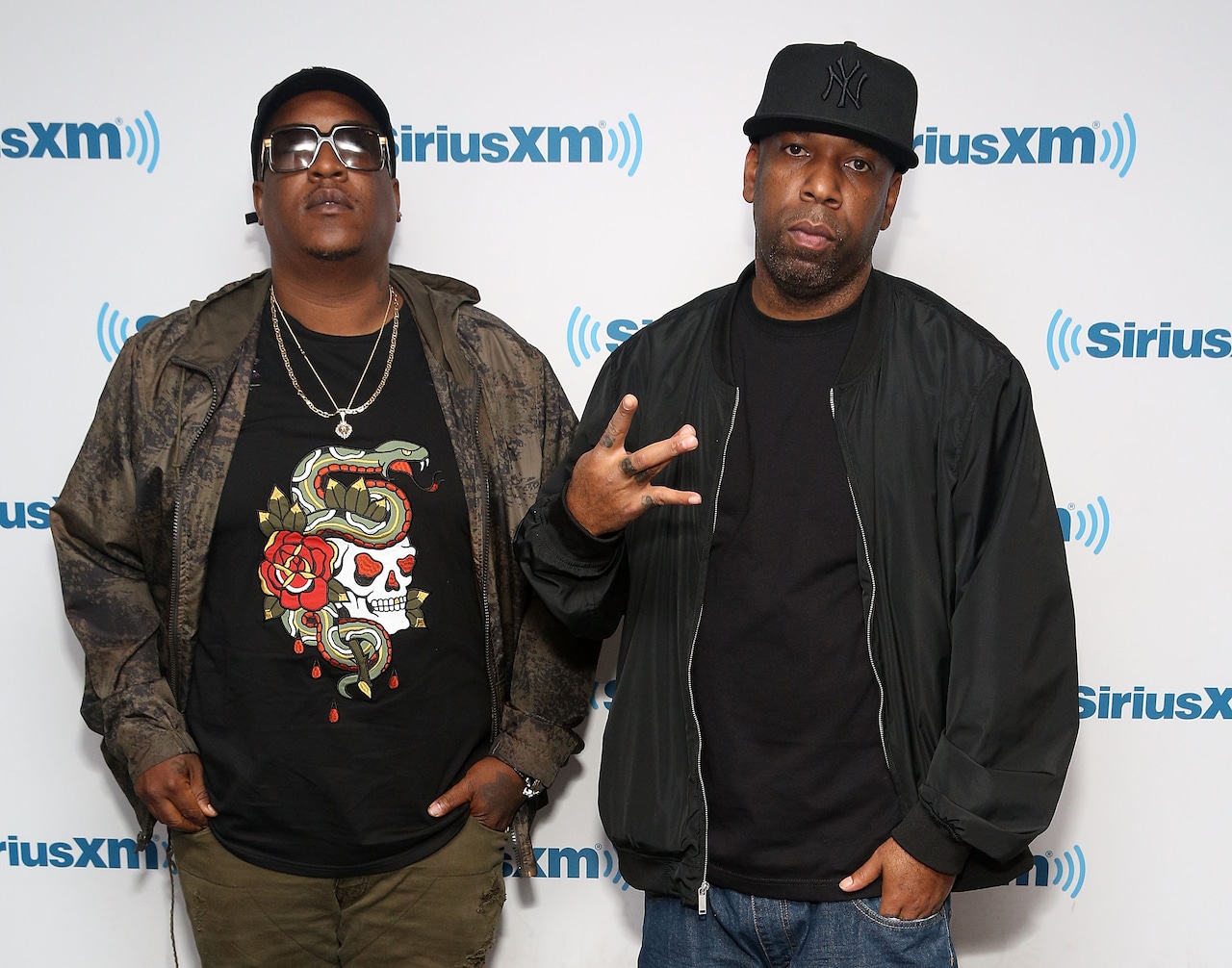
Young Noble, who worked with Tupac Shakur, dead in Atlanta at 47
Young Noble, a member of rap group the Outlawz and a Tupac Shakur affiliate, has died at the age of 47.
The emcee, whose real name is Rufus Lee Cooper III, reportedly took his own life in Atlanta, according to fellow Outlawz member E.D.I. Mean who shared the news of his death on social media.
“Today I got some of the worst and unexpected news imaginable,” he wrote.
“My brother and partner for over 30 years took his life this morning. Rest in Power Rufus Young Noble Cooper. I obviously am in no shape to talk about this right now so PLEASE give his family and I some time to process this. Mental illness is a real battle being fought by so many.” Shakur’s Instagram account, managed by his estate, reposted the message.
The rapper was best known for his work with the Outlawz and appearances on Shakur tracks including “Hail Mary” and the posthumous “Baby Don’t Cry (Keep Ya Head Up II).” Throughout his career, he released five solo albums and numerous collaborative projects with artists including Layzie Bone, Krayzie Bone and Dead Prez’s Stic.Man.
Cooper was born in Sierra Madre, CA, and moved to New Jersey when he was eight years old. It was there that he met fellow Outlawz members Yaki Kadafi and Hussein Fatal and started recording music.
He connected with Shakur after moving back to California and made his debut on the rapper’s 1996 album “The Don Killuminati: The 7 Day Theory,” appearing on the opening track “Bomb First (My Second Reply)” and as part of the Outlawz on “Just Like Daddy” and “Hail Mary.”
Over the years, Cooper amassed a sizable discography following his solo debut “Noble Justice” in 2002. He released his most recent album “Outlaw University” in 2023.
Following news of his death, several of his associates posted on social media in his remembrance. “RIP to my Thug Brother @young_noble just got the devastating news,” wrote Layzie Bone.
“I think of Edi and his whole family. My condolences to his family Wife and kids and friends and fans rest up eternal bro. This mental health is a scary thing.”
If you or someone you know is struggling or in crisis, help is available. Call or text 988 or chat at 988lifeline.org.
© 2025 Variety Media, LLC, a subsidiary of Penske Business Media; Distributed by Tribune Content Agency, LLC
If you purchase a product or register for an account through a link on our site, we may receive compensation. By using this site, you consent to our User Agreement and agree that your clicks, interactions, and personal information may be collected, recorded, and/or stored by us and social media and other third-party partners in accordance with our Privacy Policy.
Continue Reading
-
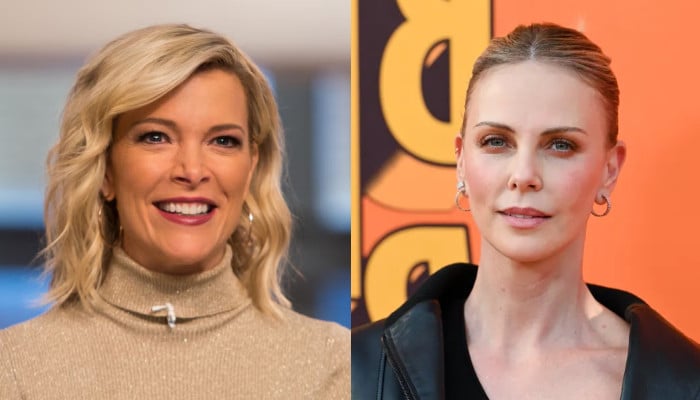
Megyn Kelly slams Charlize Theron for ‘vulgar’ admission: ‘Have some class’
Megyn Kelly didn’t hold back when reacting to Charlize Theron’s recent comments about her personal life.
The former Fox News anchor shared strong criticism during the latest episode of The Megyn Kelly Show, where she labeled the actress’s podcast appearance as “vulgar” and “off-putting.”
“She decided to go on a podcast tour, for some reason, sat down with Call Her Daddy, the s*x podcaster who interviewed Kamala Harris, all about how much they love abortions,” Kelly said.
“And this is Charlize Theron trying to sound like [a] super cool girl, and I’m gonna let you decide for yourself whether that’s what she accomplished…”
Theron, 49, had opened up during her interview with host Alex Cooper, saying, “I did just recently f–k a 26-year-old, and it was really amazing… I’ve never done that.
And I was like, ‘Oh, this is great.’ Women should be the ones that are like, ‘F–k you, I’m going to have an orgasm.’”
Kelly questioned the tone and intention behind the actress’s remarks.
“She’s 49 years old. She’s trying to sound like she’s 26 years old, and it’s inappropriate. It feels weird. She’s one of our biggest stars, that’s true. Act like it… Have some class.”
Later in the episode, Kelly went further, suggesting Theron may not be fully truthful about the relationship.
“I kind of call bulls–t, because I believe that Charlize Theron probably prefers women. That’s my belief. Okay, I’m entitled to my opinion, and there’s no reason to get into the details as to why I believe it, but I believe it,” she said.
“And I don’t think that she’s telling the truth about the 26-year-old.”
Theron is currently promoting her upcoming Netflix action film The Old Guard 2, and her comments have stirred a wave of reaction online and across media.
Continue Reading
-
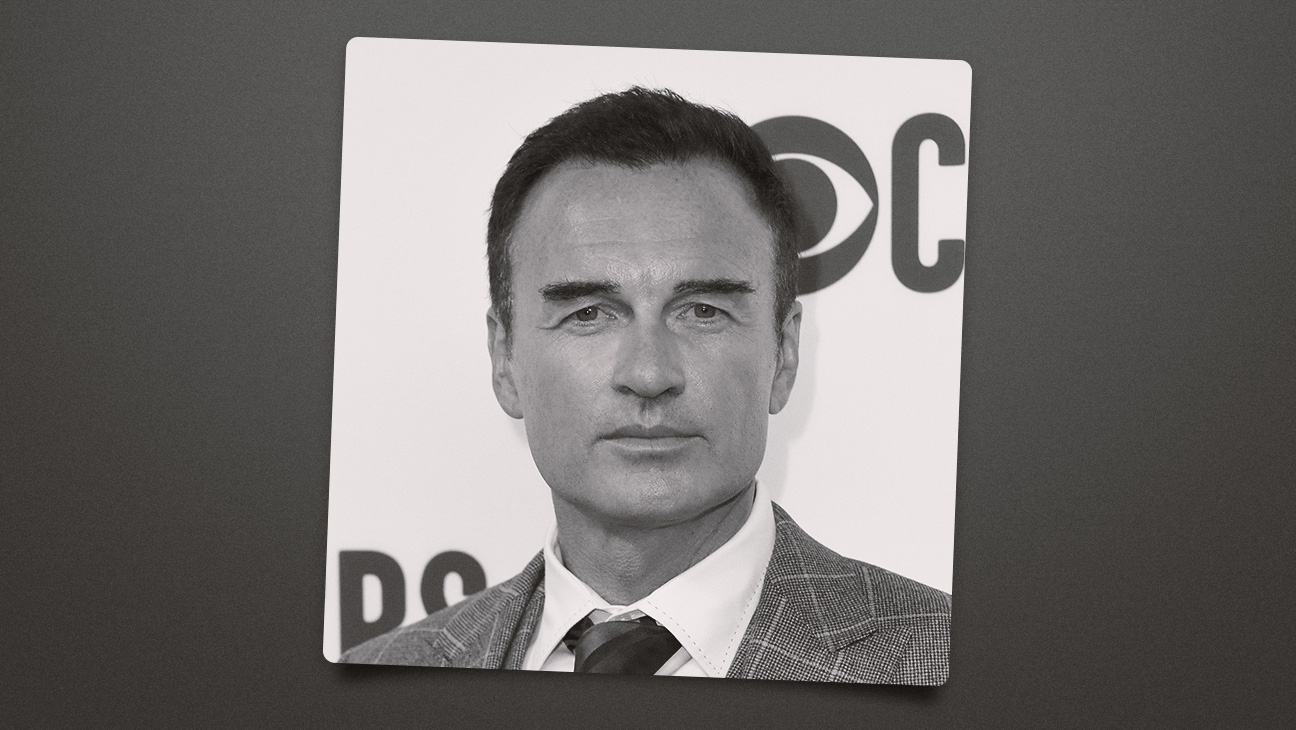
‘Nip/Tuck,’ ‘Fantastic Four’ Actor Was 56
Julian McMahon, the Australian actor known for his roles in Nip/Tuck and two Fantastic Four movies from 2005 and 2007, has died after a battle with cancer. He was 56.
McMahon died Wednesday in Clearwater, Florida, his rep David Schiff, founder of MGMT Entertainment, told The Hollywood Reporter.
McMahon, born in Sydney on July 27, 1968, was the son of former Australian prime minister William McMahon and Lady Sonia McMahon.
He began acting on Australian soaps The Power, the Passion as well as Home and Away and appeared on the U.S. soap Another World in 1993. He transitioned to primetime TV with a role on NBC’s Profiler and spent three seasons on the WB’s Charmed.
He memorably starred alongside Dylan Walsh in Ryan Murphy’s FX plastic surgery drama, Nip/Tuck, which ran for six seasons and earned him a Golden Globe nomination for his role as Dr. Christian Troy.
On the film side, he played Dr. Doom in Tim Story’s two Fantastic Four movies, 2025’s Fantastic Four and 2007’s Fantastic Four: Rise of The Silver Surfer. His other film credits include roles in Premonition, Red, Paranoia and, last year, The Surfer and The Supremes at Earl’s All-You-Can-Eat.
His other TV credits include roles on FBI: Most Wanted, Runaways and the recently canceled murder mystery comedy The Residence.
Reflecting on being an Australian in Hollywood, McMahon told the Sydney Morning Herald in 2017, “It’s a funny town and there’s a bit of a last man standing theory to it sometimes.” Early on, he recalled, often feeling “like you’re not cutting it, you’re never going to and nothing is happening for you and you’re just the wrong person and maybe you should go and do something else or go home to Australia, which a lot of people did.”
Of his role in FBI: Most Wanted, McMahon told Soap Opera Digest that the part was a “really fascinating character.”
“I was thinking of going back to network television at the time, and I had read a lot of scripts and I was quite surprised, to be honest, that this is the one that stuck with me the most, but it was and here I am,” he said of joining the CBS series, which had a backdoor pilot in the first season of FBI.
Reflecting on his career with Soap Opera Digest, McMahon credited the “commitment” he picked up from working on The Power, The Passion and Nip/Tuck.
“I’ve never lost my passion for what I do,” he said. “And so I think that is something that I’ve carried throughout my whole career and I think it’s been an important facet of what I consider being successful, that I’ve stayed committed to my craft and evolving that craft, and enjoying working in that space.”
Survivors include his third wife, Kelly, who he married in 2014, and his daughter, Madison, with his second wife, American game show host Brooke Burns. His first wife was Australian singer-actress Dannii Minogue, sister of Kylie Minogue.
McMahon even had a funny moment with his ex-sister-in-law, filming a scene in which he and Kylie Minogue kiss, when he returned to Australia to make Swinging Safari in 2018.
“That was an impromptu moment,” McMahon told the Herald Sun. “[Director] Steph [Elliott] said ‘Do what you want, Julian!’ and I thought, ‘Bugger it, I’ll get up and snog my ex sister-in-law’ … She had this great reaction, like she was being attacked by some kind of creature. It was very funny.”
Mike Barnes contributed to this report.
Continue Reading
-
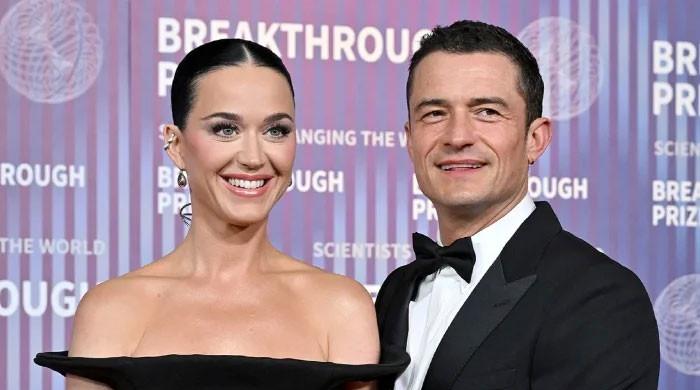
Katy Perry ‘disappointed and sad’ over Orlando Bloom’s post-split behavior
Katy Perry fumes over Orlando Bloom’s party spree post split Katy Perry is feeling hurt and disappointed after her split from former fiance Orlando Bloom, as he was seen partying in Italy just weeks after their breakup.
During Jeff Bezos and Lauren Sanchez’s star-studded wedding that came right after Katy and Bloom’s split news broke, the 48-year-old actor was spotted enjoying his single life and partying on a yacht.
On the other hand, the 40-year-old pop star is miles away on the Australian leg of her Lifetimes world tour, was seen fighting back her tears while performing on stage.
“It’s disappointing,” an insider close to Katy told the outlet how she feels about Orlando behaviour. “It’s hurtful and annoying. If he’s going to behave like an acting-up adolescent, that’s on him. She’s going to continue to work and take care of Daisy.”
It is pertinent to mention that Katy and Orlando share a four-year-old daughter, Daisy Dove.
“Katy knows that he’s free to do whatever the hell he wants to do, she hoped he’d do it a little more discreetly and thoughtfully,” the source continued. “So she’s disappointed and sad.”
Continue Reading